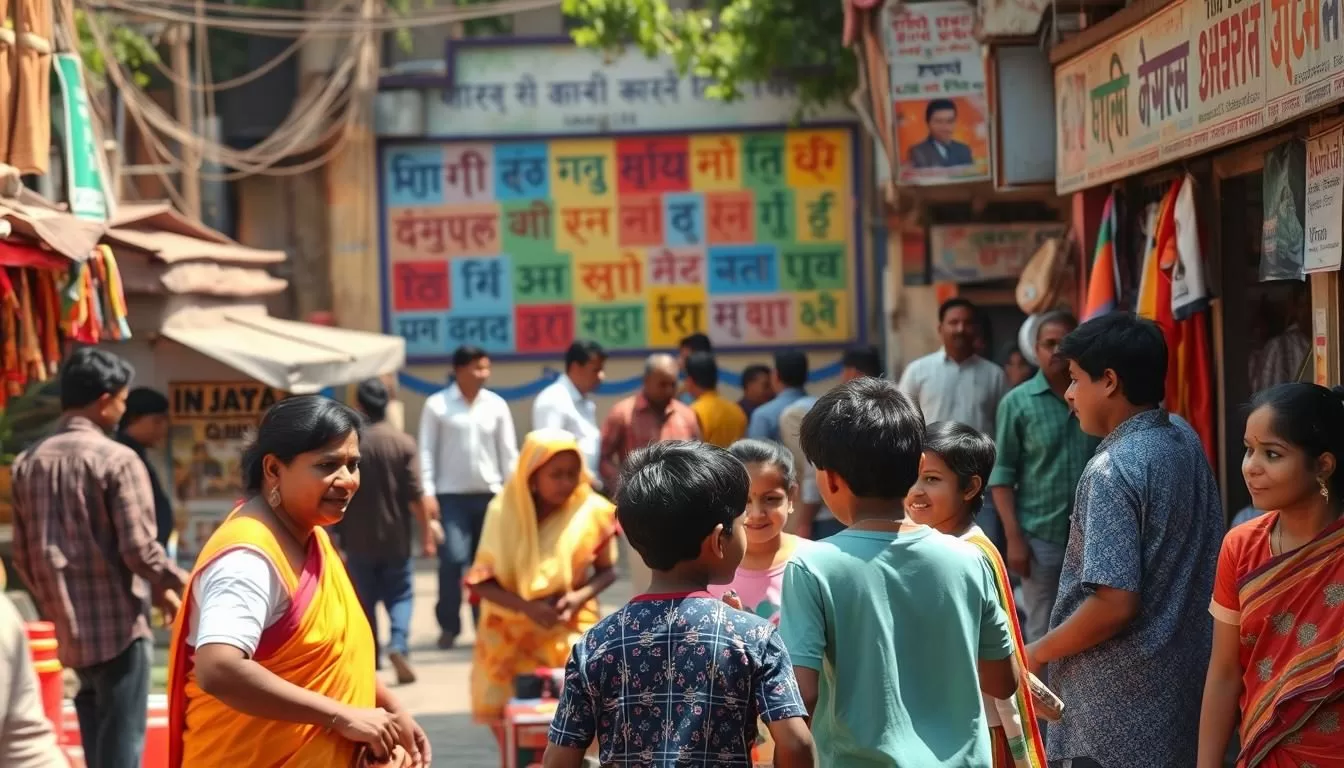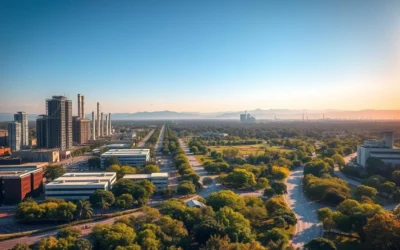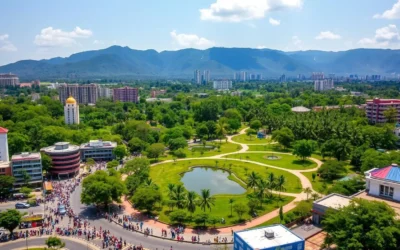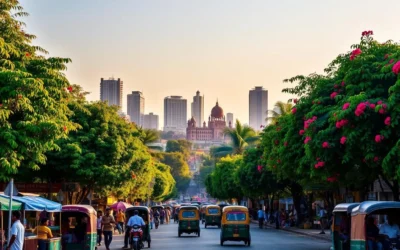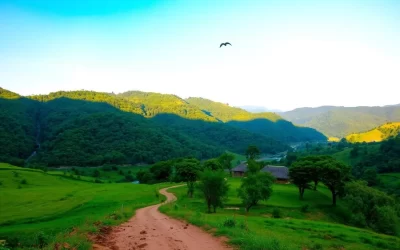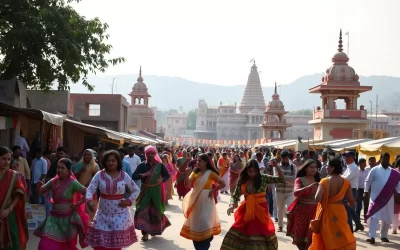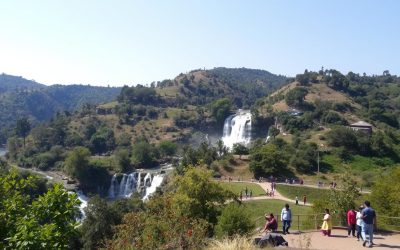✓ Accommodations✓ Flights✓ Rental Cars
As you explore Jharkhand, one of India‘s youngest states, you’ll uncover a rich tapestry of languages that reflect its diverse cultural heritage.
The state boasts a unique multilingual environment, featuring both Indo-Aryan and Austroasiatic language families. While official language policies are in place, numerous regional and tribal languages thrive across Jharkhand.
Understanding this linguistic diversity is key to appreciating the state‘s cultural complexity and historical development. As you delve into the world of languages spoken in Jharkhand, you’ll gain insight into the efforts being made to preserve this rich cultural heritage.
Linguistic Diversity of Jharkhand
As you explore Jharkhand, you’ll find that its linguistic diversity is one of its most striking features. The state is home to a multitude of languages, each with its own unique history and cultural significance.
Historical Background of Languages in Jharkhand
The historical background of languages in Jharkhand is complex and diverse, shaped by centuries of migration, cultural exchange, and political developments. Many languages spoken in Jharkhand have evolved from Sanskrit and Prakrit roots, reflecting the region’s rich linguistic heritage. The languages have been influenced by various dialect families, resulting in a complex linguistic ecosystem.
Connection to Indo-Aryan Language Family
The languages spoken in Jharkhand have a strong connection to the Indo-Aryan language family. Most major languages, including Urdu, Nagpuri, Bhojpuri, Angika, Khortha, Oriya, Bengali, Sadri, and Magahi, have descended from three main dialect families. This connection is evident in their vocabulary and grammatical structures, showcasing the linguistic tradition and cultural continuity in the region.
| Language | Dialect Family | Speakers |
|---|---|---|
| Khortha | Indo-Aryan | Majority |
| Nagpuri | Indo-Aryan | Significant |
| Bhojpuri | Indo-Aryan | Substantial |
The linguistic diversity of Jharkhand is a reflection of its cultural richness and historical depth. As you delve deeper, you’ll notice how geographical isolation has contributed to the development of distinct dialects within the state, and how the linguistic boundaries often transcend modern state borders.
The Official Languages Act of Jharkhand
As you explore the linguistic nuances of Jharkhand, you’ll discover the significance of the Official Languages Act. This act is a crucial legislative framework that protects and promotes the state’s linguistic diversity.
Hindi as the Official Language
The Official Languages Act designates Hindi as the official language of Jharkhand, making it the primary medium for government administration, education, and official communication. By recognizing Hindi as the official language, the government aims to streamline governance and facilitate efficient communication between authorities and citizens. This move has helped to create a unified administrative framework, ensuring that official processes are carried out efficiently.
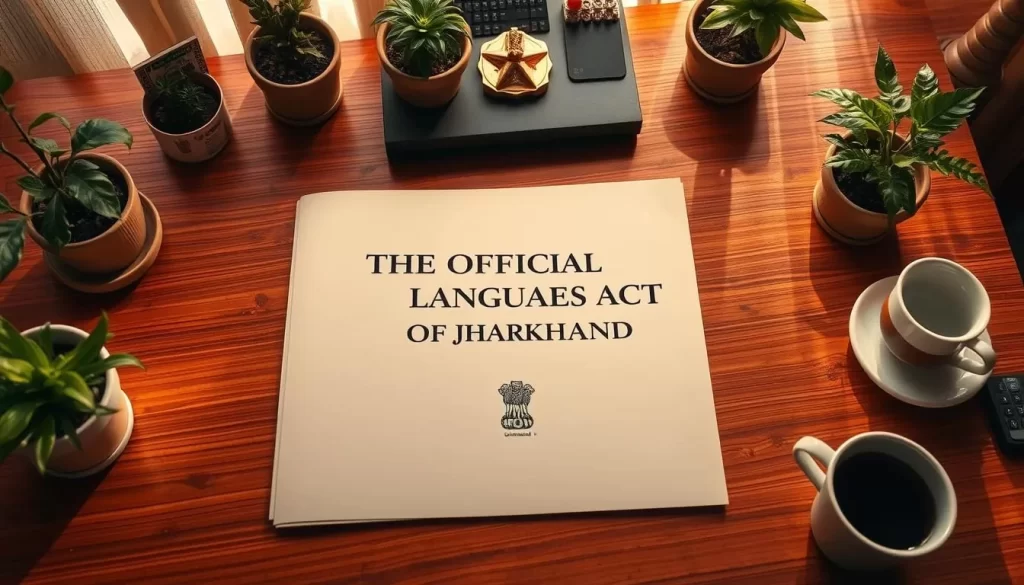
Recognition of Regional and Tribal Languages
The Act also recognizes the importance of regional and tribal languages in Jharkhand, acknowledging their role in preserving the state’s cultural identity. By providing provisions for the use of multiple languages in education, the Act allows children to learn in their mother tongues during early education. This not only helps to preserve endangered languages but also promotes linguistic diversity within the state.
The recognition of regional and tribal languages under this Act has created pathways for their use in various aspects of life, including education and cultural promotion. This approach has helped to balance the need for administrative efficiency with the need to preserve the state’s rich linguistic heritage.
Jharkhand, India: Official and Widely Spoken Languages
As you explore Jharkhand, you’ll discover a rich tapestry of languages spoken across the state. The linguistic landscape is diverse, with various languages playing crucial roles in different regions.
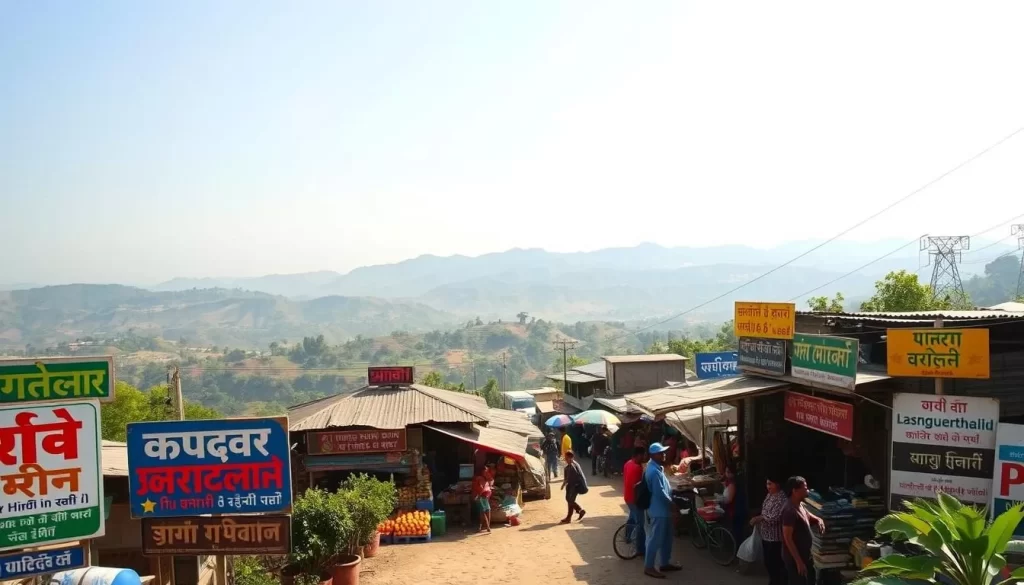
Khortha: The Most Widely Spoken Language
Khortha, also known as Eastern Magahi, is the most widely spoken language in Jharkhand. It serves as a lingua franca across approximately 16 districts, particularly in the Santhal Pargana and North Chotanagpur divisions. You’ll find that both tribal and non-tribal communities use Khortha as a linking language.
Santali: The Prominent Tribal Language
Santali is a significant language in Jharkhand, belonging to the Austroasiatic language family. It has constitutional recognition under the Eighth Schedule, highlighting its importance among the state’s tribal communities. As you interact with local populations, you’ll notice the prevalence of Santali in certain regions.
Other Major Languages
Apart from Khortha and Santali, other major languages spoken in Jharkhand include Magahi, Bhojpuri, Maithili, and Nagpuri. Each of these languages has a significant number of speakers across different parts of the state. The table below summarizes the major languages and their characteristics:
| Language | Speakers | Regions |
|---|---|---|
| Khortha | Majority | Santhal Pargana, North Chotanagpur |
| Santali | Tribal communities | Various districts |
| Magahi, Bhojpuri, Maithili, Nagpuri | Significant populations | Different regions of Jharkhand |
Hindi is the official language of Jharkhand, primarily used in government, education, and urban areas. However, the everyday language spoken by most rural residents varies, reflecting the state’s rich linguistic diversity.
Deep Dive into Major Languages of Jharkhand
As you explore Jharkhand, you’ll discover a rich tapestry of languages that have evolved over time. The state’s linguistic diversity is a reflection of its cultural heritage and historical influences.
Khortha Language and Its Influence
The Khortha language is a significant linguistic presence in Jharkhand. When you examine Khortha closely, you’ll discover it has been influenced by multiple languages, including Gulgulia, Maithili, Bengali, Hindi, and Magahi, making it a linguistic melting pot. This blending of languages has enriched Khortha, making it a unique part of Jharkhand’s cultural identity.
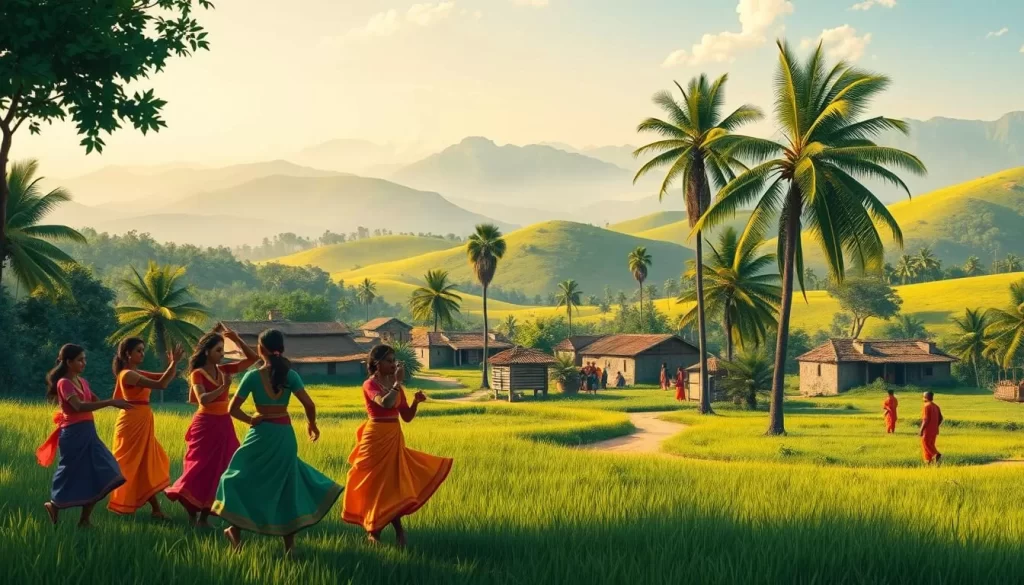
Magahi Language and Its Speakers
The Magahi language has ancient roots, tracing back to Magadhi Prakrit from the historic Magadha kingdom. You’ll find that Magahi is spoken by millions in Jharkhand, and its influence extends beyond the state’s borders. The language has evolved over time, incorporating various dialects and regional nuances.
Bhojpuri Language in Jharkhand
Bhojpuri is another major language spoken in Jharkhand, particularly in the northwestern regions. It’s also spoken in neighboring states like Uttar Pradesh and Bihar, demonstrating how languages can transcend state boundaries. Bhojpuri is considered one of the seven main dialects of Hindi and holds significant cultural importance.
Bengali and Urdu in Jharkhand
Bengali speakers are primarily found in the eastern districts of Jharkhand, bordering West Bengal. They maintain strong cultural and linguistic ties with the state. Urdu, on the other hand, is spoken in urban centers, particularly among Muslim communities, serving important cultural and religious functions. The presence of these languages highlights Jharkhand’s linguistic diversity.
| Language | Speakers | Regions |
|---|---|---|
| Khortha | Majority in Jharkhand | Central and some eastern parts |
| Magahi | Millions in Jharkhand | Parts of Jharkhand, Bihar |
| Bhojpuri | Northwestern Jharkhand | Jharkhand, Uttar Pradesh, Bihar |
| Bengali | Eastern districts | Jharkhand, West Bengal |
| Urdu | Urban centers | Jharkhand, various states |
Language Preservation Initiatives in Jharkhand
Jharkhand is implementing several measures to protect its rich linguistic diversity. You can see the state’s commitment to preserving its languages through various initiatives, particularly focusing on endangered tribal languages.
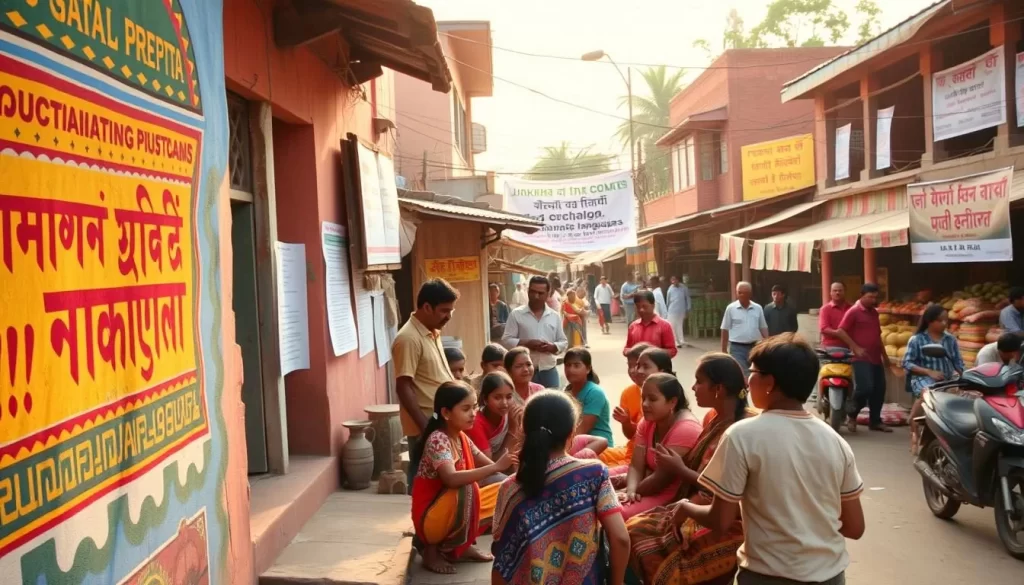
Education in Mother Tongue
The state’s education policy encourages instruction in the mother tongue, especially at the primary level. You can observe children learning in their native languages before transitioning to Hindi or English. This approach helps in preserving the state’s linguistic heritage and promotes a stronger connection to their cultural roots.
By using local languages as a medium of instruction, Jharkhand aims to improve educational outcomes and preserve its diverse linguistic traditions.
Cultural Promotion Through Languages
Jharkhand’s cultural landscape is rich with diverse languages, and the state promotes this diversity through various cultural events. You can experience the state’s linguistic diversity firsthand at cultural festivals that showcase performances, literature, and art in regional languages.
Community-led initiatives have also emerged, where elders teach younger generations their ancestral languages through informal classes and cultural activities, thus preserving the state’s cultural heritage.
Conclusion
You’ve gained insight into Jharkhand’s complex linguistic landscape, which is shaped by its history and cultural identity. The state’s linguistic diversity reflects its rich cultural heritage, with various languages playing a crucial role in shaping identity and community. Jharkhand’s official language policy recognizes Hindi, while also preserving regional and tribal languages. The balance between modernization and cultural conservation is evident in the language preservation efforts. As you’ve learned, language in Jharkhand is not just a means of communication but a living heritage that continues to evolve. The multilingual nature of Jharkhand offers a glimpse into India’s broader linguistic diversity and the challenges of language policy in a diverse nation.
The above is subject to change.
Check back often to TRAVEL.COM for the latest travel tips and deals.
